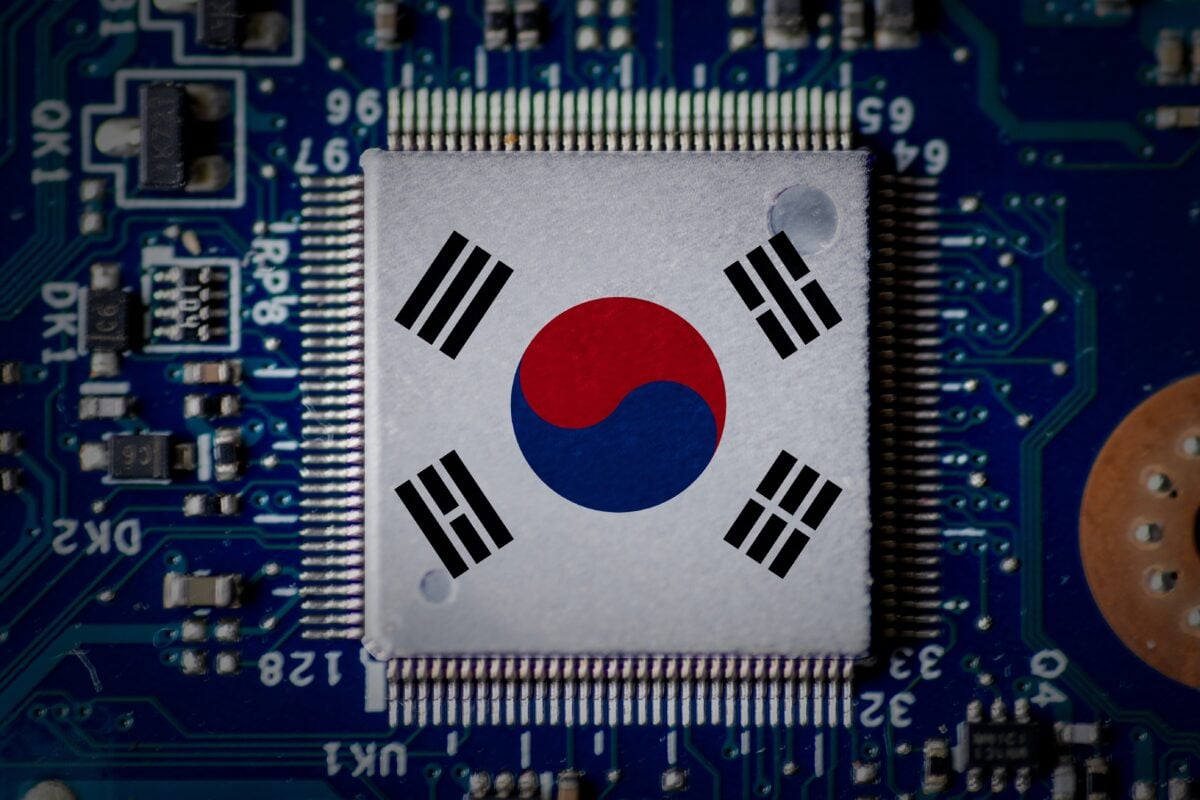TLDRs;
Contents
- South Korea unveils record US$546B 2026 budget, prioritizing AI research, industrial support, and social welfare expansion.
- AI research funding rises 19.3% to US$25.4B, signaling determination to compete with U.S. and China in tech.
- Social welfare spending grows 8.2% to US$193.75B, aimed at addressing low birthrate and aging population challenges.
- Fiscal deficit projected at 4% of GDP, a sharp break from South Korea’s historically conservative financial policies.
South Korea has unveiled a bold new budget that signals its intent to prioritize artificial intelligence (AI) and economic transformation.
The 2026 spending proposal, announced on August 29 by the Ministry of Finance, raises government expenditures by 8.1% to 728 trillion won (US$546 billion), the sharpest increase in four years.
The budget reflects President Lee Jae Myung’s commitment to push growth-oriented policies, with AI research and industrial support receiving record allocations. However, the aggressive fiscal expansion also marks a dramatic break from the country’s historically conservative approach to public spending.
Record Research and AI Investment
The centerpiece of the budget is a 19.3% surge in research and development spending, bringing the allocation to 35.3 trillion won (US$25.4 billion). Much of this funding will go toward AI development, a sector the government sees as critical for long-term competitiveness.
This aggressive commitment places South Korea among the world’s top government spenders on AI, signaling its determination to compete with global leaders like the United States and China. Analysts note that while private sector investment in AI is robust, government-driven funding remains essential to accelerate innovation and infrastructure.
Alongside research, industrial support will grow by 14.7% to 32.3 trillion won (US$23.25 billion). This measure is designed to help exporters weather new U.S. tariffs while bolstering industries critical to South Korea’s economic base, such as semiconductors, electronics, and automotive manufacturing.
Expanding Social Welfare Spending
The budget also increases welfare allocations, underscoring the government’s dual focus on growth and social stability. Spending in this category will rise by 8.2% to 269.1 trillion won (US$193.75 billion).
Key priorities include addressing the country’s persistently low birthrate and strengthening social safety nets for an aging population. Experts believe these measures are essential to counteract demographic challenges that threaten South Korea’s long-term economic vitality.
A Sharp Fiscal Shift Under Lee Jae Myung
Perhaps the most striking aspect of the budget is its departure from South Korea’s fiscal norms. The country has long been known for caution in public finances, maintaining an average fiscal deficit of just -0.89% of GDP from 1988 to 2024.
In contrast, the 2026 plan projects a 4.0% deficit, more than four times the historical average. This shift represents a fundamental change in economic management compared to the previous conservative administration under Yoon Suk Yeol, which emphasized fiscal sustainability.
The debt-to-GDP ratio is also expected to rise from 48.1% to 51.6% in just one year. Supporters of the plan argue that the trade-off is necessary to stimulate growth, particularly in high-potential areas like AI. Critics, however, warn of long-term risks if debt accumulation accelerates too quickly.
Global Context and Growing Competition
South Korea’s investment push comes amid intensifying global competition for AI leadership. Governments worldwide are pouring resources into AI, recognizing it as a cornerstone of future economies.
In the United States, federal AI contract funding surged 150% in recent years, while the global AI market reached US$455 billion in 2023. South Korea’s US$25.4 billion research commitment underscores its ambition to claim a significant share of that market.
Adding to the momentum, OpenAI is preparing to launch a Seoul office in September 2025, underscoring the country’s growing importance in the global AI ecosystem. Industry observers suggest that the alignment of foreign tech investments with government spending could accelerate South Korea’s emergence as a regional AI powerhouse.


